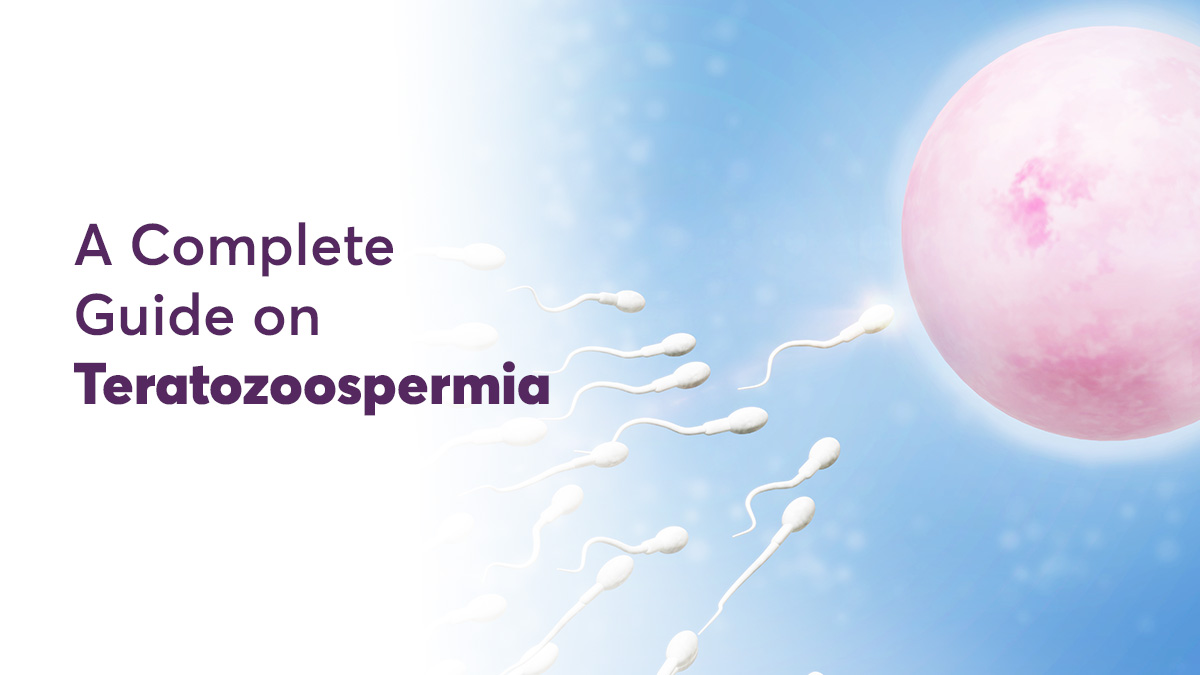The fertility of both partners, male and female, determines the chances of natural conception for a couple. Unfortunately, male reproductive health tends to be under-discussed. Of the various male fertility disorders, teratozoospermia is one that significantly impacts the chances of pregnancy.
Teratozoospermia, by definition, is a condition that affects the count or morphology of spermatozoa. It refers to abnormalities in the shape or size of at least 85% of sperms. An abnormally high sperm count affects semen quality.
Who is at Risk for Teratozoospermia?
Men of all ages and backgrounds can develop teratozoospermia. However, those with a family history of the disorder and those who have undergone chemotherapy or pelvic/adrenal surgery are at greater risk. Medical conditions, such as diabetes, may also increase the risk of teratozoospermia.
Types of Teratozoospermia
Usually, doctors identify the type of abnormality in the sperm based on the location of morphological disruption. These may be the head, midpiece, or tail. A morphology range of 40% to 70% is considered normal and does not significantly impact male fertility. Teratozoospermia is classified according to the severity of the condition and its impact on fertility:
Mild Teratozoospermia
When 86% to 90% of sperms in the ejaculated semen exhibit an abnormality, it is considered mild teratozoospermia. Men in the mild stage have a higher chance of natural conception.
Moderate Teratozoospermia
When normal sperm constitute 5% to 9% of the semen, it is classified as moderate. Fertility specialists may recommend assistive procedures, such as IVF-ICSI (Intracytoplasmic Sperm Injection), to facilitate conception.
Severe Teratozoospermia
In severe teratozoospermia, 96% or more of the sperms are affected. Natural pregnancy is nearly impossible in such cases. Fertility specialists recommend advanced treatments, such as IMSI (Intracytoplasmic Morphologically-selected Sperm Injection).
Astheno Teratozoospermia
The combination of morphological abnormalities and asthenozoospermia, i.e., poor motility. Unfortunately, there is no cure for astheno teratozoospermia. It can be improved over time with lifestyle changes. Procedures like ICSI and IMSI can help couples get pregnant.
Oligo teratozoospermia
Oligo astheno teratozoospermia is an extreme condition in which the sperm count is very low with high morphology disturbance. Plus, the sperms have low motility. There is no treatment for oligospermia-related teratozoospermia. Assistive procedures are required to facilitate conception.
Symptoms and Causes of Teratozoospermia
Teratozoospermia does not have any noticeable symptoms. Most men discover the condition through fertility tests. If you have been trying to start a family for over 6 months or are above 40 years of age, consider visiting a fertility specialist to conduct fertility tests for men and women to identify the medical condition. They will also help you understand the causes of teratozoospermia, which can include:
Hormonal Imbalances
Imbalances in reproductive hormones, especially testosterone, may result in teratozoospermia. These can usually be treated with medicinal treatments and hormonal therapies.
Varicocele
Enlarged testicular or scrotal veins may affect sperm production and morphology. The condition results in changes in testicular temperatures that may cause sperm abnormalities. Treatment for teratozoospermia due to varicocele requires surgical intervention.
Cryptorchidism
Cryptorchidism or undescended testicles is also a common cause.
Infections
STDs or infections of the reproductive tract may affect sperm health.
Lifestyle Choices
Lifestyle factors, such as smoking, excessive alcohol consumption and exposure to toxins due to drug use or occupation, may also increase the risk of sperm abnormalities in men. Frequent saunas or hot baths that raise testicular temperature can also cause teratozoospermia.
Diagnosis of Teratozoospermia
Teratozoospermia is identified through semen analysis. A sperm morphology test checks for deviations from the normal morphology range and size. A single test result may not be final. It is best to consult a fertility specialist for a confirmed diagnosis. Upon confirmation, the doctor may further probe into your family history, lifestyle choices and medical records to identify the cause and decide on a course of treatment.
Teratozoospermia can cause infertility in men. Since the condition does not present any symptoms and is only diagnosed after failure to conceive naturally, it may become severe if left undiagnosed for a long time.
Treatment of Teratozoospermia
Hormonal therapies or surgical intervention may be used to treat the condition if the underlying cause is evident. However, if the cause of teratozoospermia is genetic, lifestyle or medical history-related, treatment might not be possible. Your doctor may suggest lifestyle changes to improve sperm quality and alternative methods to increase the chances of conception.
Conclusion
Teratozoospermia is not the end of the world. Couples facing problems due to the condition can conceive through assistive reproductive techniques. IVF, ICSI, and IMSI are popularly used to help men with teratozoospermia become fathers.
If you are thinking of starting a family but are facing problems in conception, get in touch with the specialists at Oasis Fertility Clinic. You can visit the website to find the nearest clinic or for a live chat or call 1800-3001-1000 for immediate assistance.

